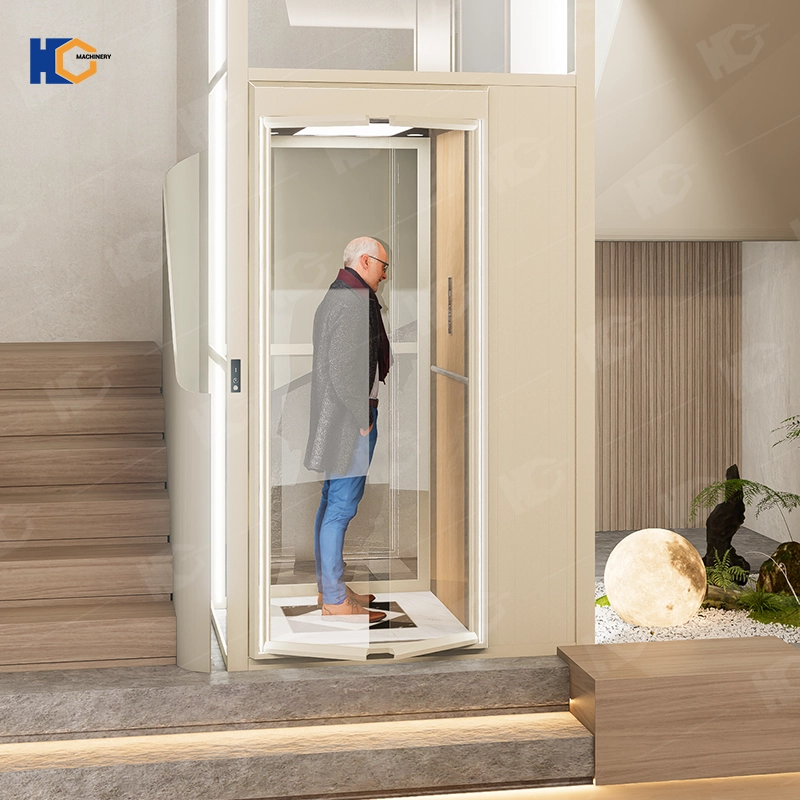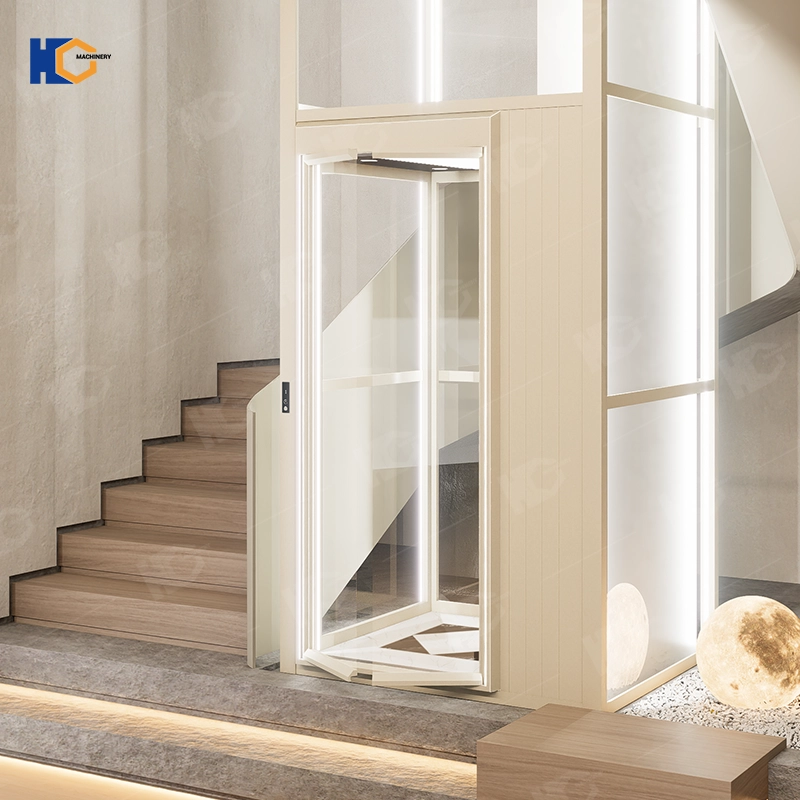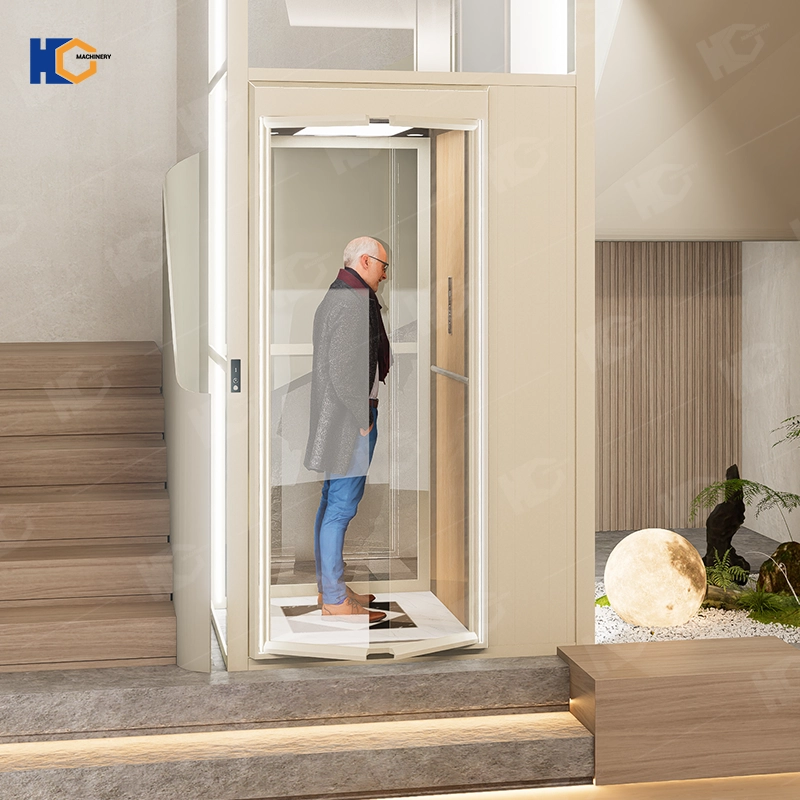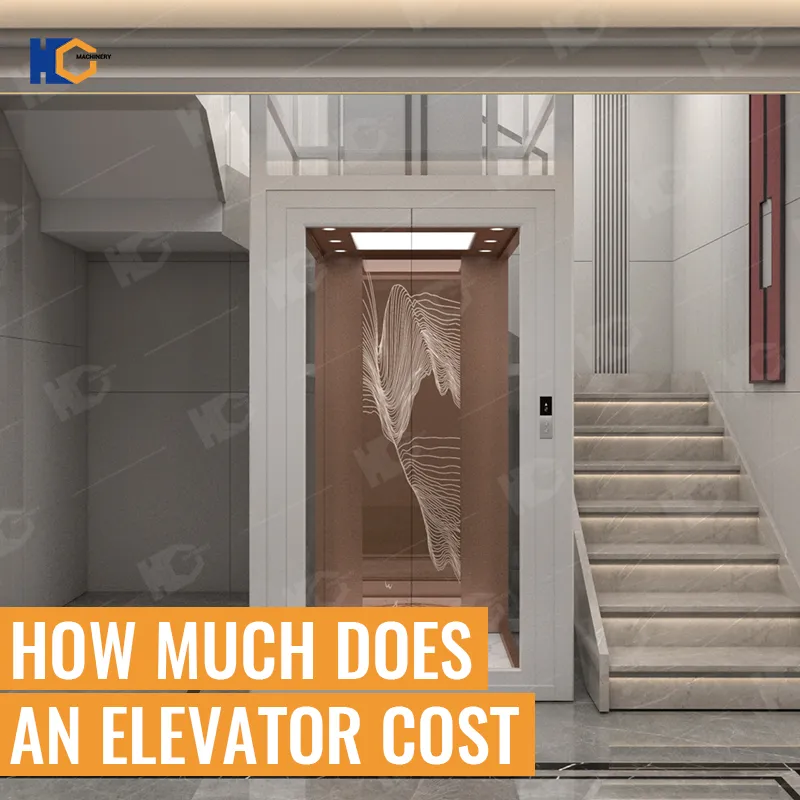A single-person home elevator is a compact, space-saving lift designed for private residences. It’s perfect for small homes, townhouses, or multi-story apartments where a full-sized elevator isn’t practical. If you're looking for a safe, stylish, and efficient way to move between floors without climbing stairs, a single-person home elevator could be the perfect solution.
In this guide, we’ll cover:
✔ Standard dimensions & speed
✔ Safety features
✔ Price range
✔ Key components & maintenance
✔ Design & manufacturing process
✔ Why choose JNHC Lift – a leading Chinese home elevator manufacturer

Standard Dimensions & Speed
Cabin Size (Single Person Comfortably)
Width: 700–900 mm (27–35 inches)
Depth: 700–900 mm (27–35 inches)
Height: 2000–2200 mm (79–87 inches)
Shaft (Installation Space Required)
Width: 900–1100 mm (35–43 inches)
Depth: 900–1100 mm (35–43 inches)
Height: Depends on floor-to-floor distance (minimum ~2.5m / 8.2 ft)
Speed
Standard: 0.15–0.3 m/s (slow & smooth for home use)
Faster Models (Optional): Up to 0.4 m/s (still safe & quiet)
A single-person elevator doesn’t need to be fast—safety and comfort are more important!

Single Person Home Elevator: How It Works (Simple Explanation)
The working principle of a single-person home elevator is actually not complicated. It primarily relies on the coordinated operation of the drive system + control system + safety system to achieve safe and smooth vertical movement. Below is an easy-to-understand breakdown:
1. Core Drive Systems (3 Common Types)
The "heart" of the elevator determines its mode of operation. Small home elevators mainly use the following three drive technologies:
(1) Screw Drive
Principle: A motor rotates a large screw, and a nut (connected to the cabin) moves up and down along the threads.
Advantages: Simple structure, no machine room required, low maintenance (no hydraulic oil needed).
Disadvantages: Relatively slow speed (0.1~0.3 m/s), suitable for 2-3 story homes.
Ideal for: Duplex apartments, loft conversions, and other small spaces.
![Screw Drive Illustration]
(Imagine a rotating screwdriver moving a nut up and down)
(2) Hydraulic Drive
Principle: A pump pressurizes hydraulic oil to push a piston rod, lifting the cabin; descent is controlled by slowly releasing pressure through a valve.
Advantages: Smooth operation, strong load capacity (up to 300 kg), low noise.
Disadvantages: Requires regular hydraulic oil changes, performance may be affected in cold temperatures.
Ideal for: Villas and environments where quiet operation is desired.
(3) Traction Drive
Principle: A motor drives steel ropes/belts, using a counterweight to balance the cabin's weight (similar to a miniaturized version of large elevators).
Advantages: Faster speed (0.4 m/s), energy-efficient (30% more energy-saving than hydraulic systems).
Disadvantages: Requires overhead space in the shaft (small machine room).
Ideal for: Multi-story homes (4 stories or more).
953379.webp)
2. Control System (The "Brain" of the Elevator)
Control Panel: Receives button commands and coordinates motor start/stop and floor positioning.
Variable Frequency Drive (VFD): Ensures smooth acceleration/deceleration, avoiding sudden stops (similar to an electric car's seamless shifting).
Smart Features:
Power failure self-rescue (backup battery slowly lowers the cabin to the nearest floor).
Self-diagnosis (automatically detects faults and locks into a safe state).
3. Safety Systems (Multiple Safeguards)
| Safety Device | Function |
|---|---|
| Speed Governor | Triggers emergency braking if overspeeding occurs |
| Buffer | Absorbs impact in case of cabin free-fall |
| Door Lock Mechanism | Prevents operation if doors are not securely closed |
| Emergency Lighting | Automatically activates during power outages |
| Emergency Call Button | Directly contacts after-sales service or family members |
4. Workflow Example (Using Screw Drive as an Example)
Press the call button → The control panel receives the signal.
Motor starts → The screw rotates, moving the cabin up/down.
Approaching the target floor → The VFD ensures smooth deceleration for precise stopping.
Door sensors → Doors automatically open after confirming safety.
162075.webp)
How is Safety Guaranteed?
Home elevators must be extremely safe, especially for elderly or disabled users. Here’s how modern single-person lifts ensure security:
✔ Emergency Braking System – Stops immediately if a problem is detected.
✔ Battery Backup – Keeps the elevator running during a power outage.
✔ Door Sensors – Prevents closing if an obstacle is detected.
✔ Overload Protection – Alerts if weight exceeds capacity (usually 200–250 kg).
✔ Manual Lowering Feature – If stuck, the elevator can be lowered safely without power.
✔ Certifications – Look for CE, EN 81-41, or ASME A17.1 compliance.
Price Range: How Much Does It Cost?
| Type | Price (USD) | Features |
|---|---|---|
| Basic Model | 10,000–10,000–15,000 | Standard cabin, manual doors, screw drive |
| Mid-Range | 15,000–15,000–22,000 | Glass cabin, automatic doors, hydraulic drive |
| Premium Model | 22,000–22,000–30,000 | Luxury finishes, smart controls, silent operation |
Additional Costs:
Installation (~$2,000–$5,000)
Customization (e.g., extra stops, special materials)
Maintenance (~$200–$500/year)
Bulk buyers (developers, contractors) can negotiate discounts!
Key Components & Maintenance Tips
Main Parts of a Home Elevator
Cabin – Made of steel, glass, or acrylic.
Drive System – Screw (low maintenance), hydraulic (strong), or traction (smooth).
Control Panel – Touchscreen or button-operated.
Safety Sensors – Infrared beams, emergency stop button.
Guide Rails – Ensure smooth movement.
Simple Maintenance Checklist
✅ Weekly – Check door movement, clean cabin.
✅ Monthly – Test emergency features, inspect rails.
✅ Yearly – Professional servicing (lubrication, electrical checks).
Proper maintenance extends lifespan to 20+ years!
Design & Manufacturing Process
Step 1: Custom Design
Engineers assess home layout (shaft space, power supply).
Choose materials (glass for modern look, steel for durability).
Step 2: Manufacturing
Frame & Cabin – Built from high-strength steel/aluminum.
Drive System – Installed & tested for smooth operation.
Safety Checks – Every elevator undergoes load & emergency tests.
Step 3: Installation
Takes 2–5 days (depending on home structure).
Minimal disruption (no major construction needed for some models).
Why Choose JNHC Lift? (Top Chinese Manufacturer)
Jinan Huichuang Machinery Manufacturing Co.,Ltd (JNHC lift)is located in Jinan, Shandong, the hometown of hydraulic lifting platforms. We are a well-known Hydraulic elevator, home elevator, lift platform manufacturer and supplier in China.
If you want a reliable, high-quality, and affordable single-person home elevator, JNHC Lift is a top choice. Here’s why:
✔ ✅ 15+ Years of Experience – Trusted by homeowners worldwide.
✔ ✅ Custom Designs – Glass, steel, or hybrid cabins.
✔ ✅ Advanced Safety – CE & EN 81-41 certified.
✔ ✅ Energy-Efficient – Low power consumption.
✔ ✅ Global Support – Fast shipping & local technicians.
JNHC Lift offers free consultations & 3D design previews!




790.webp)